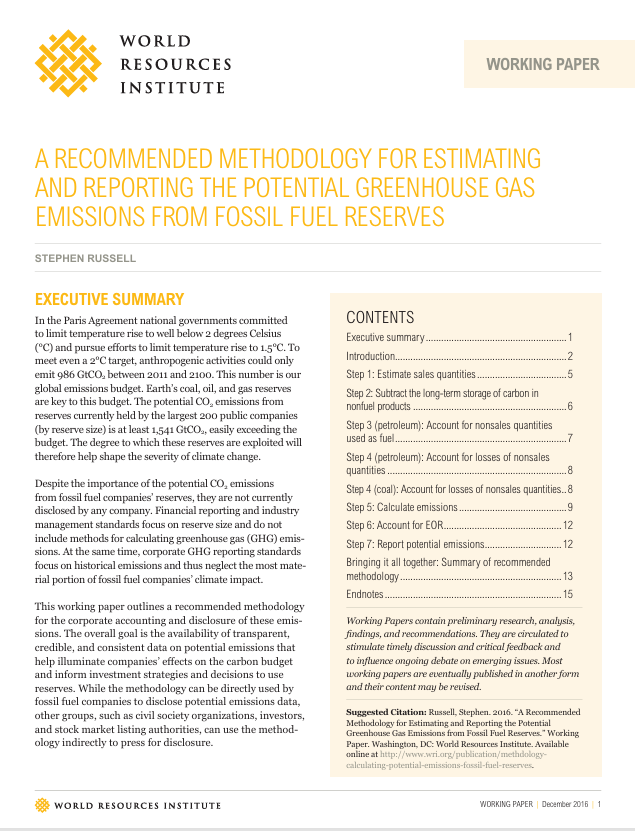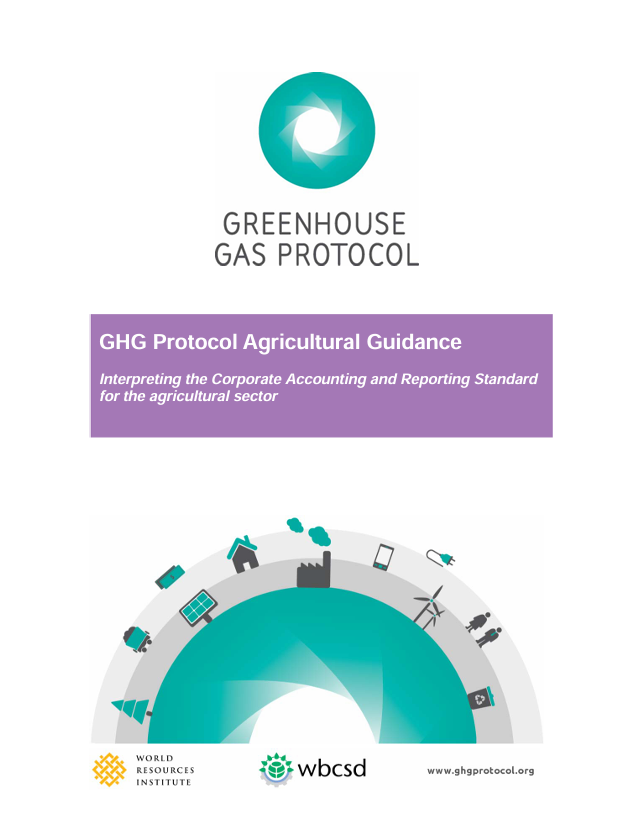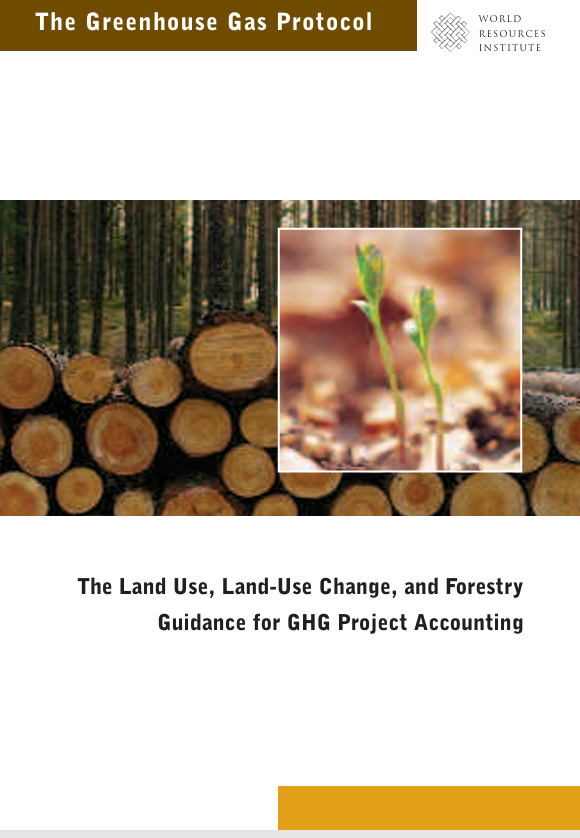Library | Tag
GHG protocol
Refine
17 results
REFINE
SHOW: 16


GHG protocol calculation tools and guidance
The GHG Protocol’s calculation tools and guidance details Excel‑based, cross‑sector, sector‑specific, and country‑specific tools, including those for cities and countries. Each tool includes step‑by‑step guidance and emission factors to support accurate GHG inventory development in line with the Protocol’s standards
Interpreting the corporate standard for U.S. public sector organizations
This guide interprets the Greenhouse Gas Protocol Corporate Standard for U.S. public sector organisations. It provides standardised methods for accounting and reporting greenhouse gas emissions, supports inventory quality, and addresses public sector-specific scenarios such as leased assets, joint operations, and regulatory compliance.
Global protocol for community-scale greenhouse gas inventories: Supplemental guidance for forests and trees
This supplemental report provides standardised methods for communities to estimate greenhouse gas emissions and carbon removals from forests and trees. It expands the global protocol for community-scale greenhouse gas inventories by offering detailed guidance for accounting Scope 1 emissions and removals, supporting local climate action planning and integration with national inventories.
Guidelines for quantifying GHG reductions from grid-connected electricity projects
These guidelines provide a standardised, policy-neutral framework for quantifying greenhouse gas (GHG) reductions from grid-connected electricity projects. They cover both generation and electricity reduction activities, using simplified methods to estimate baseline emissions and avoided emissions. Intended for project developers and programme designers, the guidelines emphasise accuracy, transparency, and conservativeness.
Estimating and reporting the comparative emissions impacts of products
This report outlines a neutral framework for estimating and reporting the greenhouse gas impacts of products, both positive and negative. It advocates the use of consequential methods for decision-making, highlights methodological challenges in attributional approaches, and recommends transparency and completeness in emissions assessments and corporate reporting.
Greenhouse gas protocol land sector and removals initiative: Project overview
The greenhouse gas protocol’s land sector and removals initiative aims to develop internationally accepted corporate guidance for accounting and reporting emissions and removals from land use, bioenergy, and carbon removal. It seeks to improve transparency, support target-setting, and align with climate goals through a multi-stakeholder, science-based process.
The GHG protocol for project accounting
This report outlines standards and procedures for quantifying and reporting greenhouse gas (GHG) reductions from mitigation projects. It provides a framework to estimate baseline emissions, assess additionality, and apply consistent accounting principles. The guide supports transparency, credibility, and harmonisation across project-based GHG initiatives.
A recommended methodology for estimating and reporting the potential greenhouse gas emissions from fossil fuel reserves
This working paper presents a methodology for fossil fuel companies to estimate and disclose potential greenhouse gas emissions from their reserves. It outlines seven steps for calculating emissions, addressing combustion, leakage, and storage factors, with the aim of improving transparency and enabling comparison across companies and alignment with climate targets.
GHG protocol agricultural guidance: Interpreting the corporate accounting and reporting standard for the agricultural sector
The GHG protocol agricultural guidance provides a framework for agricultural companies to develop greenhouse gas (GHG) inventories aligned with the Corporate Standard. It offers sector-specific methodologies to account for direct and indirect emissions, carbon stock changes, and unique agricultural factors such as land use change and biological processes. The guidance enhances consistency, transparency, and usability of agricultural GHG data for decision-making and reporting.
The greenhouse gas protocol: Land use, land-use change, and forestry (LULUCF) guidance for GHG project accounting
The land use, land-use change, and forestry (LULUCF) guidance for GHG project accounting provides structured methods to quantify and report greenhouse gas (GHG) reductions from reforestation and forest management projects. It supplements the GHG Protocol for Project Accounting, detailing baseline procedures, monitoring, and risk mitigation approaches specific to land-based carbon projects.
Product life cycle accounting and reporting standard
The GHG Protocol Product Life Cycle Accounting and Reporting Standard provides a globally consistent framework for companies to quantify and publicly report greenhouse gas emissions and removals associated with individual products across their life cycle. It enables informed emissions reduction strategies and supports performance tracking, supplier engagement, and product differentiation.
Policy and action standard: An accounting and reporting standard for estimating the greenhouse gas effects of policies and actions
The Policy and Action Standard provides a consistent framework for estimating and reporting the greenhouse gas (GHG) impacts of policies and actions. It outlines methods for ex-ante and ex-post assessments, defines principles of GHG accounting, and offers guidance on defining policy boundaries, estimating baseline emissions, and assessing uncertainty to support transparent, accurate decision-making.
Mitigation goal standard: An accounting and reporting standard for national and subnational greenhouse gas reduction goals
This report outlines a standardised framework for governments to design, assess, and report on greenhouse gas mitigation goals. It defines principles, methodologies, and accounting requirements to support consistent and transparent emissions tracking and goal evaluation at national and subnational levels.
Global protocol for community-scale greenhouse gas inventories: An accounting and reporting standard for cities version 1.1
The Global Protocol for Community-Scale Greenhouse Gas Inventories (Version 1.1) provides a standardised framework for cities to measure and report greenhouse gas emissions. It enables consistent, transparent accounting across six sectors, including energy, transport, and waste, supporting emissions tracking, target setting, and aggregation with national inventories.
The greenhouse gas protocol: A corporate accounting and reporting standard
The Greenhouse Gas Protocol Corporate Standard provides a framework for businesses to quantify and report greenhouse gas emissions. It establishes standardised accounting principles, categorises emissions by scope, and offers guidance for setting organisational and operational boundaries. The Standard promotes transparency, consistency, and comparability in corporate GHG inventories.
GHG protocol scope 2 guidance: An amendment to the GHG protocol corporate standard
This report updates the GHG Protocol Corporate Standard by introducing dual reporting for Scope 2 emissions—requiring both location-based and market-based methods. It defines Scope 2 accounting principles, emission factor hierarchies, and quality criteria for contractual instruments, aiming to improve transparency, accuracy, and comparability across energy markets.















